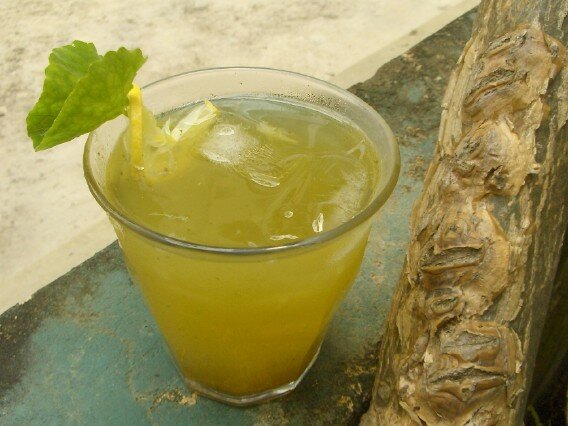BROWSE COUNTRIES/ TERRITORIES
theasiamag.com at Biofuels Conference 2009
Advances in alternative fuel and methods of conserving forests remain controversial and experimental.
Tobias Garritt wants to make sure that his business of cultivating jatropha "doesn't make the same social and environmental mistakes oil palm has made." Jatropha is a plant made famous in the past decade by its seeds containing 35 percent oil. As the global demand for fuel increases and the Earth's natural resources are demising, the pressure is on to produce a sustainable source of fuel to meet relentless demands. But sustainable doesn't just mean the resource has to be renewable. The world thought that of oil palm and more recently of maize, and look where it's gotten us. It takes 10 kilograms of maize to produce just 4 liters of ethanol, and farming that maize requires 2 liters of fossil fuels. Scientists now agree that using maize as a feed stock is too inefficient to make a significant dent in our energy needs.
Which is why Garritt's relatively small plots of jatropha in the North Coast of Papua hold so much hope. His strategy is to ensure the social sustainability within the communities that own the plots of land on which his company has leased to cultivate jatropha. He believes that by choosing a site suitable for jatopha cultivation, they will reduce their start up costs, allowing for a quicker turn around and increased profits. "Having to irrigate the land takes away its feasibility." Gerritt says he visits the sites often and asserts that the methods they've employed are better as opposed to slash and burn farming. "Our strategy also takes care of the welfare of the community by providing them income for school and medical supplies." The latter is an important factor to the project's sustainability. Oil palm cultivation is infamous for coming into conflict with native land rights amongst the people of Southeast Asia - the world's largest producer of palm oil.
Unfortunately, jatropha can only be planted on selected types of soil. It's not an alternative to palm oil. It may be introduced in specific places as a source of income but at present its feasibility as a source of alternative fuel for the world is uncertain. Garritt admits that they are "still in experimental stages" while reiterating that he "wants to keep it productive and profitable for both communities and companies."
Reinventing pond scum
Instead of entering the fields, some scientists are trying to cultivate feed stocks at the back of their laboratories. Associate Professor Jeffrey Obbard, Principal Scientist of A*Star's Bioenergy Program is trying to find the suitable macroalgae as a source of biofuel. This seems to make sense because these microbes grow fast - some forms can double in just 12 hours - and consume carbon dioxide when exposed to sunlight, making the process almost carbon neutral.
This idea isn't new. Research into its feasibility began in 1978 by the Department of Energy in the United States, but the program ended 18 years later after the government concluded the concept wasn't economically feasible.
Present technology means that for a feasible feed stock to be available the microbes should ideally be cultivated in the sea or large areas of open, terrestrial water bodies. Environmentalists are hesitant to implement this outside of the laboratory due to the unknown environmental impact of releasing large amounts of marine macroalgae into places where they do not exist naturally and run the risk of contaminating existing ecosystems and upsetting natural carbon cycles.
Unlike his peers in the US, Obbard plans not to venture into genetic engineering make his feedstock more productive than they naturally are. Genetic engineering has been explored in some studies to allow the macroalgae to secrete lipids as a part of their transpiration process, which will eliminate the need to mix the algae with a solvent in order to extract their lipids that are used in biofuel manufacturing.
"The algae needs to have a constant supply of carbon dioxide so there is a possibility of establishing these algae ponds near power stations or industries that produce a lot of carbon dioxide." Such a procedure might be a welcome outlet for heavy industries that want to reduce their carbon output. But with feasibility studies still underway, both biofuel and industrial companies will have to sit tight for a solution to their environmental woes. The only alternative to that is to invest in research and exploration for better, new alternatives.
Login or Register
 Debby Ng is an environmental photojournalist whose work has been published in several regional and international magazines, including the award-winning Lebanese magazine, Environment & Development. She has also worked with numerous Asian and international non-government organisations such as the TRAFFIC, World Wide Fund for Nature (WWF), World Society for the Protection of Animals (WSPA) and the Environmental Investigation Agency (EIA).
Debby Ng is an environmental photojournalist whose work has been published in several regional and international magazines, including the award-winning Lebanese magazine, Environment & Development. She has also worked with numerous Asian and international non-government organisations such as the TRAFFIC, World Wide Fund for Nature (WWF), World Society for the Protection of Animals (WSPA) and the Environmental Investigation Agency (EIA).
www.debbyng.net
www.pulauhantu.org
- Asian Dynasties and History
- Conservation of the Environment
- Definition: Culture
- Economy and Economics
- Food and Recipe
- Geopolitics and Strategic Relations
- Health and Body
- Of Government and Politics
- Religion and Practices
- Social Injustices and Poverty Report
- Society, Class and Division
- Unrest, Conflicts and Wars

































 Another Point
Another Point From Jerusalem to the West Bank
From Jerusalem to the West Bank
Comments
Post new comment